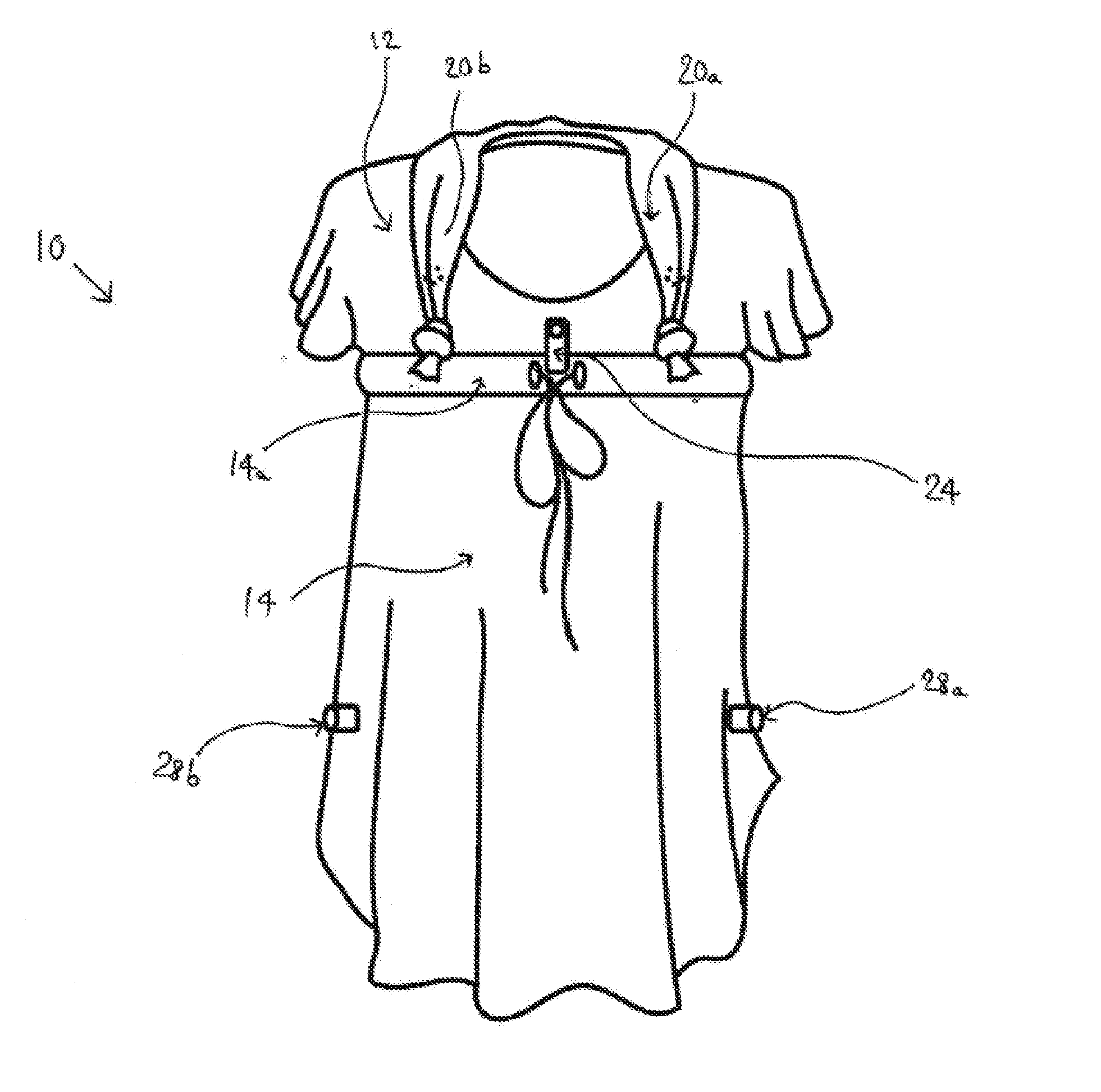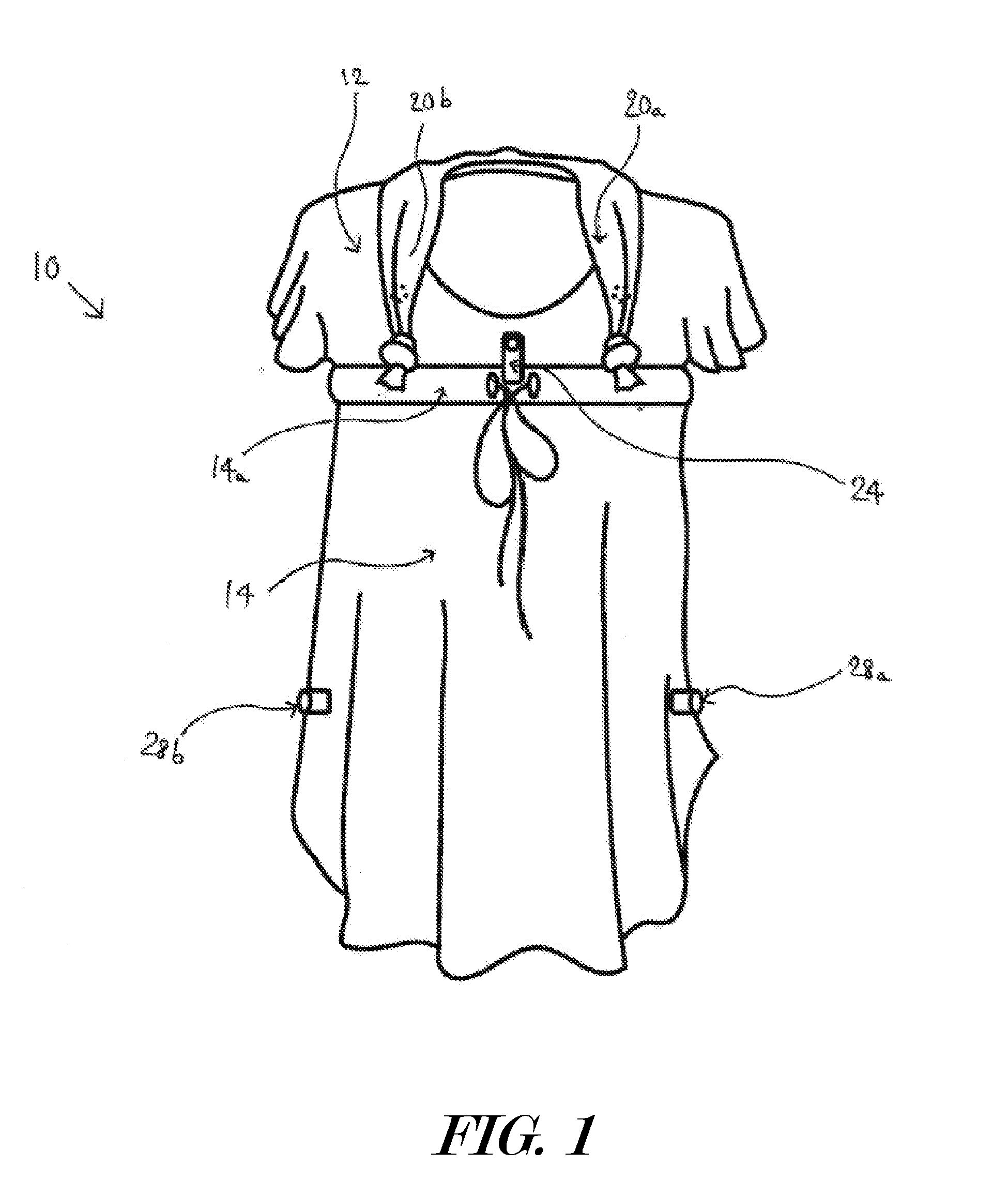Nursing garment
a technology for nursing garments and breasts, applied in the field of nursing garments, can solve the problems of difficult and stressful to find a discreet breastfeeding place, unsanitary, and less socially acceptable breastfeeding in public, and achieve the effect of reducing irritation and chafing, and more room
- Summary
- Abstract
- Description
- Claims
- Application Information
AI Technical Summary
Benefits of technology
Problems solved by technology
Method used
Image
Examples
Embodiment Construction
[0030]Referring firstly to FIGS. 1 to 3B, a nursing garment is indicated generally at 10.
[0031]The garment 10 is shown in a non-breastfeeding configuration in FIG. 1. The garment 10 may be adapted into a breastfeeding configuration indicated in FIG. 3A. The garment 10 includes a first fabric underlayer 12 and a second fabric overlayer 14. Together, the underlayer 12 and overlayer 14 have the aesthetic appearance of a normal top in the non-breastfeeding configuration. The overlayer 14 covers a portion of the front and sides of the underlayer 12.
[0032]The underlayer 12 includes a front surface 12a. An aperture 16 is provided through the front surface 12a, sized and shaped to permit the breasts of a mother wearing the top to be exposed through the underlayer 12. The front surface 12a also includes a pocket 18 at its lower end, which lies near waist height when worn, providing quick and easy access to its contents.
[0033]The overlayer 14 has an upper end 14a which lies above the aperture...
PUM
 Login to View More
Login to View More Abstract
Description
Claims
Application Information
 Login to View More
Login to View More - R&D
- Intellectual Property
- Life Sciences
- Materials
- Tech Scout
- Unparalleled Data Quality
- Higher Quality Content
- 60% Fewer Hallucinations
Browse by: Latest US Patents, China's latest patents, Technical Efficacy Thesaurus, Application Domain, Technology Topic, Popular Technical Reports.
© 2025 PatSnap. All rights reserved.Legal|Privacy policy|Modern Slavery Act Transparency Statement|Sitemap|About US| Contact US: help@patsnap.com



